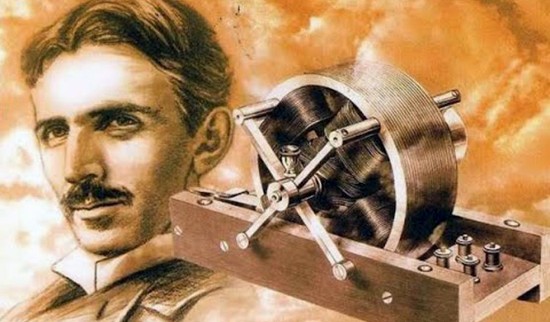Jane Marsh is a regular contributor to 21st Century Tech Blog. In this, her latest posting, she talks about Tesla’s energy theory. This is the Tesla whose name was borrowed by Elon Musk when he created his electric vehicle company. This is the Tesla who introduced alternating current to the world in competition with Thomas Edison who was fixated on direct current to power the planet. George Westinghouse took Tesla’s experiments and in the late 19th century installed the generators that turned Niagara Falls into a electric power source. Today, Tesla’s legacy can be seen in hydroelectric facilities and the electric power grids that span the planet. You can visit Jane’s Environment.co website to learn more about her interest in writing about the environment and our energy future.
Tesla’s Energy Theory of Hydroelectricity
Nikola Tesla was the epitome of the mad scientist. He was an inventor, electrical and mechanical engineer and a futurist. His energy theory about hydroelectricity involved harnessing the power of flowing water for power generation. His development of the alternating current (AC) induction motor was a critical advancement in the creation of modern hydroelectric power plants.
Tesla’s vision to use flowing water to generate electricity recognized that the forces of nature could serve to produce clean, renewable and sustainable power. The world’s first hydroelectric power station at Niagara Falls, completed in 1895, involved Tesla and George Westinghouse, another inventor and rival to Thomas Edison in the race to power the world using electricity.
Tesla’s use of kinetic energy produced by flowing water involved the water turning turbines linked to generators. His idea to harness the power of nature wasn’t novel. Humanity had already been using the power of water and the wind for milling grains and other work. His work on turning nature’s power into hydroelectricity was his genius. Hydroelectricity played a critical role in the industrialization of North America at the end of the 19th century and today, remains a primary global energy source beating all other renewables combined and nuclear by 55%. In 2020, hydroelectricity generated 17% of the electricity used around the world, ranking third after coal and natural gas.
Tesla’s Concept of Extracting Energy From the Movement of Water
Tesla’s visionary approach stands in contrast to traditional hydroelectricity. Both methods tap into water’s kinetic energy but have their key differences.
Traditional Hydroelectricity
Traditional hydroelectricity heavily relies on large-scale infrastructure like dams and waterfalls to generate power. Around 150 out of 3,900 dams in Wisconsin are utilized for hydroelectric power, and produced 192,000 megawatt/hours (mWh) in 2015. These conventional fixed sites for power generation limited the potential flexibility in using hydroelectricity.
Tesla’s Energy Theory
Tesla didn’t see the need for building such large-scale projects. He conceptualized a more decentralized and adaptable approach, potentially offering a highly efficient and less disruptive solution.
Tesla’s concept was to use water, turbines and electromagnetic generators in a number of ways by harnessing:
- Various bodies of water: Tesla aimed to get power from rivers and ocean tides.
- Constant flow: He wanted to tap into continuous river flow for a reliable energy source. Once captured, Tesla aimed for a smooth conversion of this energy into electricity, minimizing losses for better overall output.
- Ocean power: Rhythmic ocean tides were seen as predictable energy from different water sources based on location.
Tesla’s Theory Advantages
Tesla’s theory offered environmental benefits, scalability and potential cost-effectiveness, positioning it as a promising and sustainable alternative to conventional hydroelectricity. His idea had several advantages including:
- Adaptability: The approach allows flexibility to harness energy from different water sources based on location. Like how steam humidifiers use reverse osmosis to offer an eco-friendly approach for various industries, Tesla’s idea could work in multiple places worldwide, thanks to its high efficiency.
- Sustainability: Maximizing resources reduced hydroelectricity’s environmental impact unlike traditional hydropower which often disrupts aquatic habitats. Tesla wanted to avoid the need for large dams, minimizing ecosystem disruption and preserving natural river flows.
- Cost-effectiveness: His approach would be more efficient and economical, generating more electricity from the same amount of water flow.
Tesla’s Theory Challenges and Limitations
Although water is a natural energy source it still demands approximately 68 litres (18 gallons) to generate one kilowatt/hour (kWh) of electricity. Using different types of flowing water requires various designs for energy harvesting which means high startup costs.
That means to make Tesla’s theory successful, the world needs to build better turbines, smarter grids and improved energy storage. These upgrades are essential for Tesla’s model to reach its full usability and potential.
In the light of the global challenge to decarbonize energy production, adopting Tesla’s ideas once again would help in the effort to transition to a world no longer addicted to fossil fuels. It wouldn’t hurt in the 21st century to once more pay attention to Tesla’s genius.








